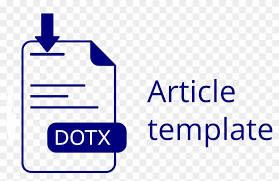Model Isotherm Multi Parameter pada Proses Adsorpsi Cr (VI) Menggunakan Arang Kayu Teraktivasi Asam
DOI: 10.55075/wa.v49i1.272Sari
Arang kayu dapat dimanfaatkan sebagai adsorben karena memiliki luas permukaan spesifik yang besar, struktur pori yang baik, dan kemampuan adsorpsi yang tinggi. Penelitian ini bertujuan untuk mengevalusi performa arang kayu teraktivasi asam dalam proses penghilangan Cr(VI) menggunakan model isotherm tiga parameter. HCl digunakan sebagai aktivator kimia pada proses adsorpsi yang dilakukan secara batch dengan variasi konsentrasi awal Cr(VI) (10-200 mg/L) dan massa adsorben 2,5 g. Beberapa model isotherm tiga parameter yang digunakan antara lain Model isotherm Sips, Toth, Redlich-Peterson dan Koble-Corrigan. Hasil yang diperoleh menunjukkan bahwa proses adsorpsi Cr(VI) yang dievaluasi menggunakan model isotherm multi parameter, cenderung memiliki kecocokan yang baik ketika dideskripsikan menggunakan model isotherm Toth dengan nilai koefisien determinasi (R2) = 0,9984, sum square error (SSE) = 2,15 x 10-8, dan nilai chi-square (x2) = 1,84 x 10-8. Nilai parameter yang diperoleh berdasarkan model isotherm Toth berturut-turut yakni qm = 1,1687 mg/g, KT = 0,0701 L/mg, dan nilai t = 3,7642.
Teks Lengkap:
PDFReferensi
Afandy, M.A. and Sawali, F.D.I., 2024. Adsorption of Chromium Hexavalent in Aqueous Solutions Using Acid-Activated Wood Charcoal: Isotherm and Kinetics Study. Jurnal Ilmiah Teknik Kimia, 8(1), pp.1–14.
Aigbe, U.O. and Osibote, O.A., 2020. A review of hexavalent chromium removal from aqueous solutions by sorption technique using nanomaterials. Journal of Environmental Chemical Engineering, 8(6), p.104503.
Ayawei, N., Ebelegi, A.N. and Wankasi, D., 2017. Modelling and Interpretation of Adsorption Isotherms. Journal of Chemistry, 2017.
Brdar, M., Šćiban, M., Takači, A. and Došenović, T., 2012. Comparison of two and three parameters adsorption isotherm for Cr(VI) onto Kraft lignin. Chemical Engineering Journal, 183, pp.108–111.
Cervera-Gabalda, L. and Gómez-Polo, C., 2022. Magnetic Fe/Fe3C@C Nanoadsorbents for Efficient Cr (VI) Removal. International Journal of Molecular Sciences, 23(23).
Chu, K.H., Hashim, M.A., Santos, Y.T. da C., Debord, J., Harel, M. and Bollinger, J.-C., 2024. The Redlich–Peterson isotherm for aqueous phase adsorption: Pitfalls in data analysis and interpretation. Chemical Engineering Science, 285, p.119573.
Ferrer, M.R.R., Kang, J.K., Choi, J.W., Lee, C.G. and Park, S.J., 2021. Surface modification of activated carbon via hcl or nh4 oh treatment to enhance the removal of cr(Vi) from aqueous solution. Desalination and Water Treatment, 220, pp.221–231.
Haeril, H., Sawali, F.D.I. and Afandy, M.A., 2024. Phytoremediation of Cr(VI) from Aqueos Solution by Pistia stratiotes L.: Efficiency and Kinetic Models. Jurnal Teknik Kimia dan Lingkungan, 8(1), pp.25–35.
Islam, M.M., Mohana, A.A., Rahman, M.A., Rahman, M., Naidu, R. and Rahman, M.M., 2023. A Comprehensive Review of the Current Progress of Chromium Removal Methods from Aqueous Solution. Toxics, 11(3), pp.1–43.
Kerur, S.S., Bandekar, S., Hanagadakar, M.S., Nandi, S.S., Ratnamala, G.M. and Hegde, P.G., 2021. Removal of hexavalent Chromium-Industry treated water and Wastewater: A review. Materials Today: Proceedings, 42, pp.1112–1121.
Khorshidi, N. and Azadmehr, A.R., 2016. Characterisation and adsorption properties of oxalate-loaded hematite composite for Cd(II) and Pb(II) adsorption: Equilibrium models, thermodynamic and kinetic studies. Separation Science and Technology (Philadelphia), 51(13), pp.2122–2137.
Kumkum, P. and Kumar, S., 2024. A Review on Biochar as an Adsorbent for Pb(II) Removal from Water. Biomass (Switzerland), 4(2), pp.243–272.
Liang, S., Guo, X., Lautner, S. and Saake, B., 2014. Removal of Hexavalent Chromium by Different Modified Spruce Bark Adsorbents. Journal of Wood Chemistry and Technology, 34(4), pp.273–290.
M. Hamzaoui, , B. Bestani, N.B., 2018. The use of linear and nonlinear methods for adsorption isotherm optimization of basic green 4-dye onto sawdust-based activated carbon. Journal of Material and Environmental Sciences, 9(4), pp.1110–1118.
Mnif, A., Bejaoui, I., Mouelhi, M. and Hamrouni, B., 2017. Hexavalent Chromium Removal from Model Water and Car Shock Absorber Factory Effluent by Nanofiltration and Reverse Osmosis Membrane. International Journal of Analytical Chemistry, 2017(1), p.7415708.
Ohale, P.E., Onu, C.E., Ohale, N.J. and Oba, S.N., 2020. Adsorptive kinetics, isotherm and thermodynamic analysis of fishpond effluent coagulation using chitin derived coagulant from waste Brachyura shell. Chemical Engineering Journal Advances, 4(July), p.100036.
Panda, H., Tiadi, N., Mohanty, M. and Mohanty, C.R., 2017. Studies on adsorption behavior of an industrial waste for removal of chromium from aqueous solution. South African Journal of Chemical Engineering, 23, pp.132–138.
Pangeran, A.B., Afandy, M.A. and Sawali, F.D.I., 2023. Efficiency of FeSO4.7H2O as a Coagulant on Chromium Hexavalent Removal Using Coagulation-Flocculation Process : Optimization Using Response Surface Methodology. Jurnal Teknik Kimia dan Lingkungan, 7(2), pp.123–133.
Ramli, N.N., Kurniawan, S.B., Ighalo, J.O., Mohd Said, N.S., Marsidi, N., Buhari, J., Ramli Shah, R.A., Zulkifli, M., Alias, J., Daud, N.M., Ahmad, J., Othman, A.R., Sheikh Abdullah, S.R. and Abu Hasan, H., 2023. A review of the treatment technologies for hexavalent chromium contaminated water. BioMetals, 36(6), pp.1189–1219.
Raut, P.N., Dolas, A.S., Chougule, S.M., Darade, M.M., Murali, G., Waware, S.Y. and Kurhade, A.S., 2025. Green Adsorbents for Heavy Metal Removal: A Study on Zinc Ion Uptake by Tinospora cordifolia Biocarbon. Journal of Mines, Metals and Fuels, 73(1), pp.21–25.
Serafin, J. and Dziejarski, B., 2023. Application of isotherms models and error functions in activated carbon CO2 sorption processes. Microporous and Mesoporous Materials, 354(March).
Setyawan, F., Sawali, F.D.I., Afandy, M.A. and Mustikaningrum, M., 2024. Cr ( VI ) Removal from Aqueos Solution by Coagulation – Adsorption Integrated System. Indonesian Journal of Chemical Science, 13(1).
Shafiq, M., Alazba, A.A. and Amin, M.T., 2021. Kinetic and isotherm studies of ni2+and pb2+adsorption from synthetic wastewater using eucalyptus camdulensis—derived biochar. Sustainability (Switzerland), 13(7).
Varank, G., Demir, A., Yetilmezsoy, K., Top, S., Sekman, E. and Bilgili, M.S., 2012. Removal of 4-nitrophenol from aqueous solution by natural low-cost adsorbents. Indian Journal of Chemical Technology, 19(1), pp.7–25.
Verayana, Paputungan, M. and Iyabu, H., 2018. Effect of HCl and H3PO4 activators on the characteristics (pore morphology) of activated coconut shell charcoal and adsorption tests on lead (Pb) metal. Jurnal Entropi, 13(1), pp.67–75.
Yulia, E., Purwasasmita, B.S., Nugraha, Ekawati, E. and Nugraha, A.B., 2024. Fabrication of Adsorbent using Nano-Sized Lignocellulosic Biochar Coated on Luffa aegyptiaca Sponge to Remove Heavy Metal Chromium VI. Sains Malaysiana, 53(1), pp.189–200.
Zhao, J., Boada, R., Cibin, G. and Palet, C., 2021. Enhancement of selective adsorption of Cr species via modification of pine biomass. Science of The Total Environment, 756, p.143816.
Refbacks
- Saat ini tidak ada refbacks.


















